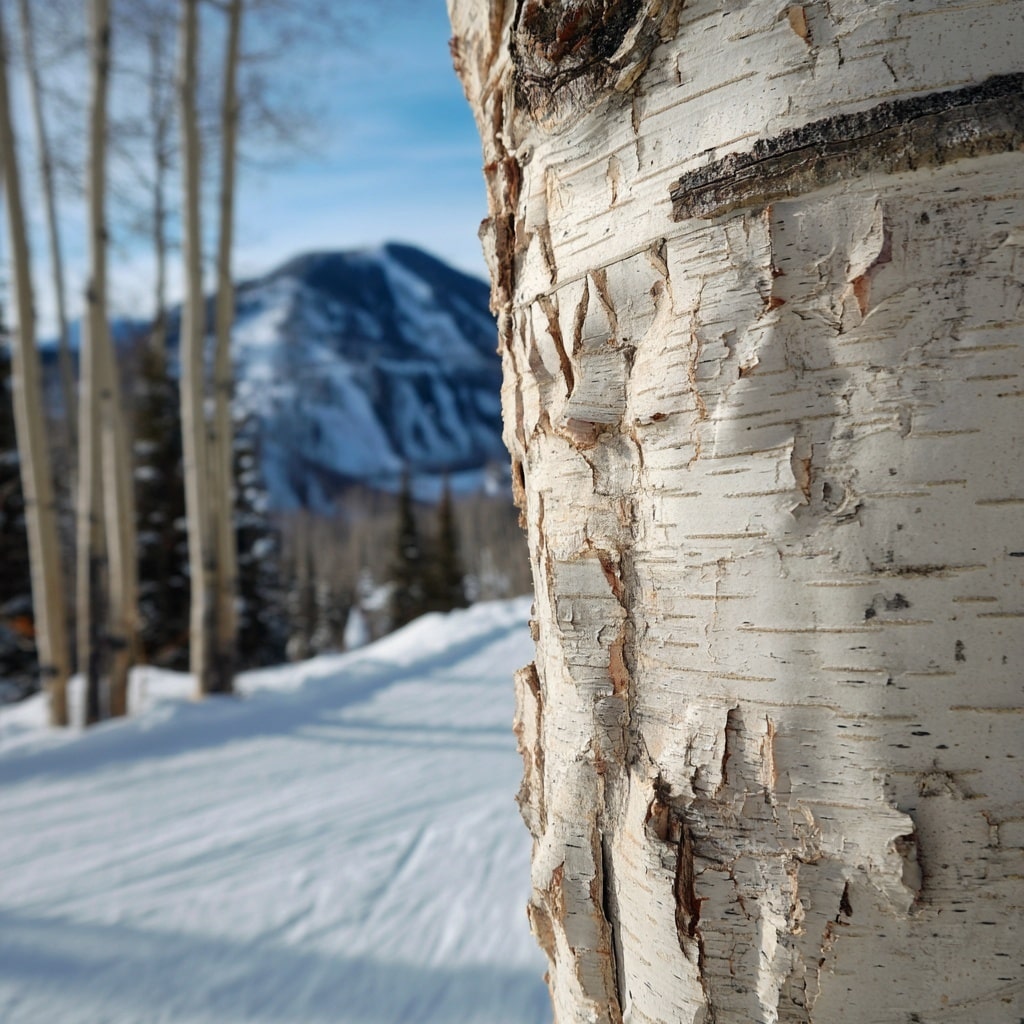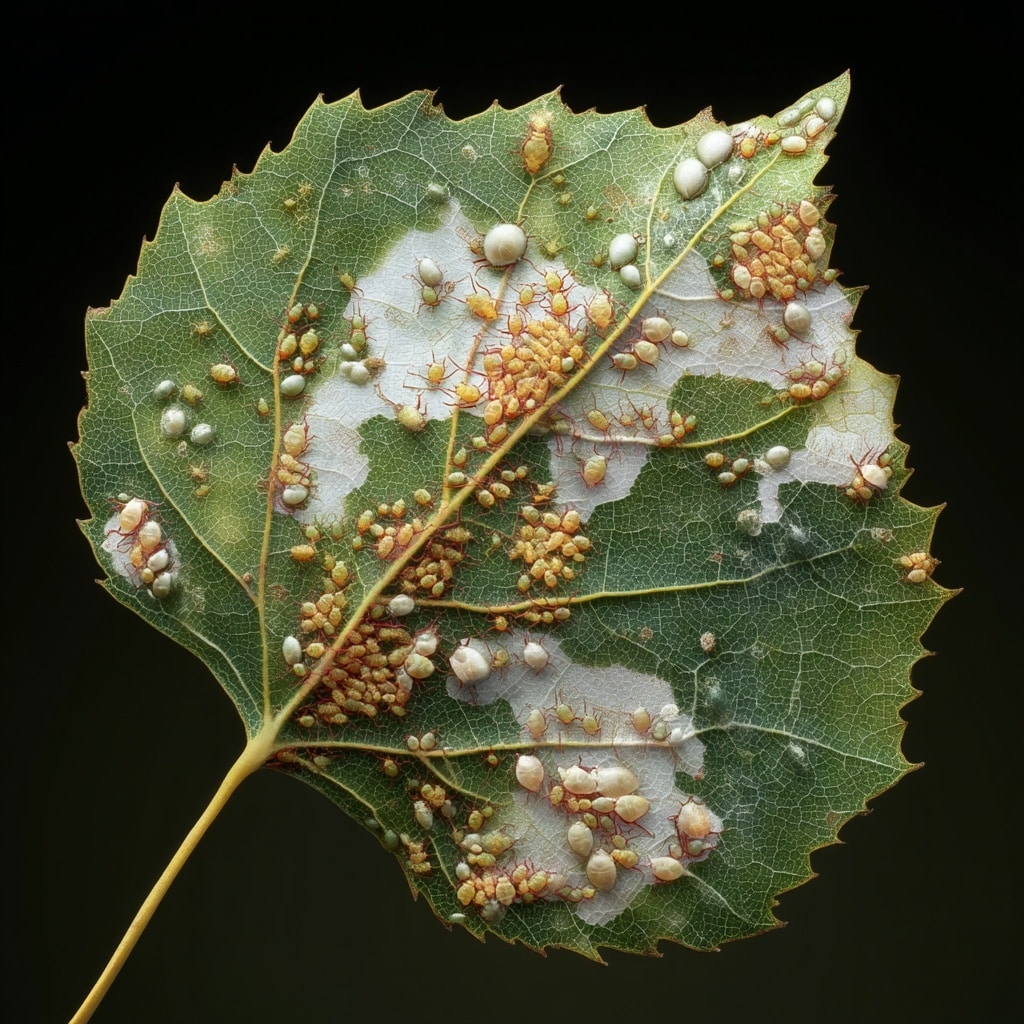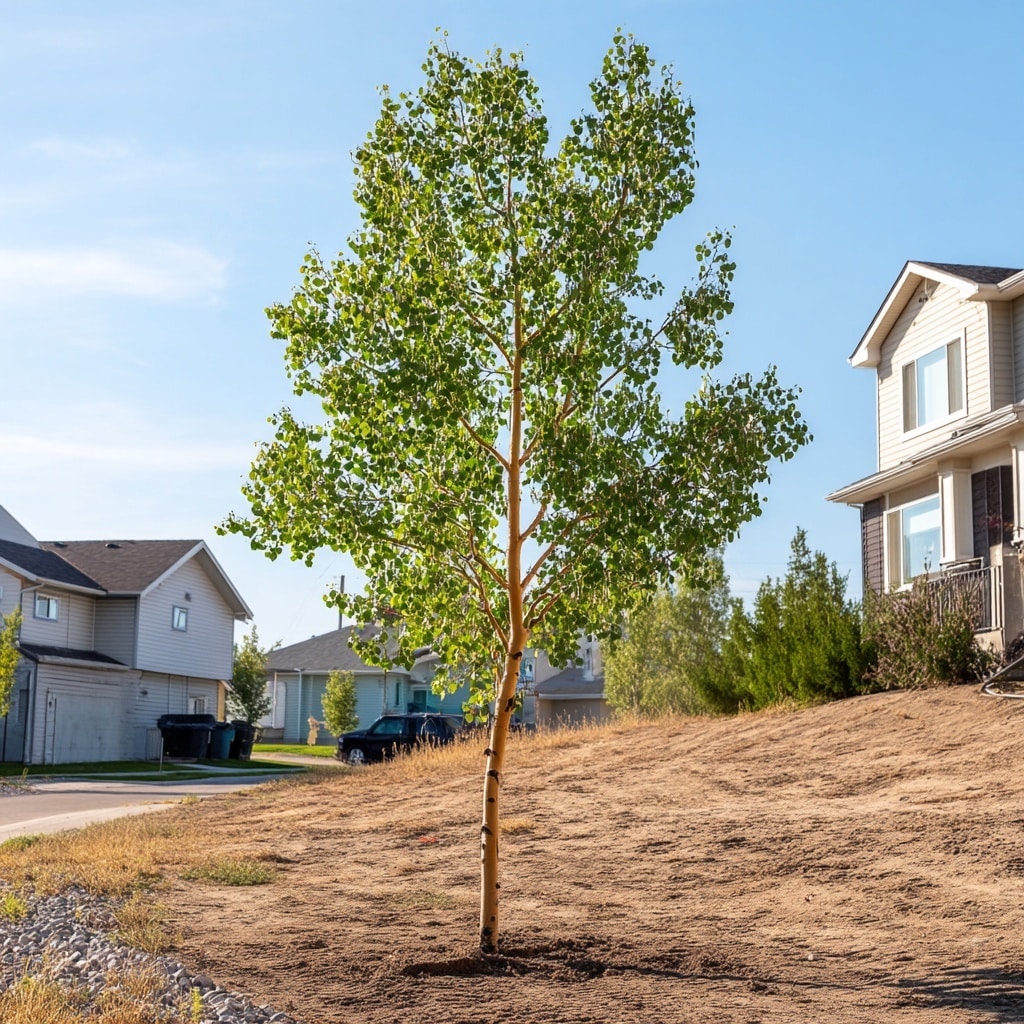Aspen trees are a beloved staple in many mountain landscapes, known for their striking white bark, vibrant fall colors, and ability to thrive at high altitudes. Despite their natural preference for cooler, elevated environments, many homeowners attempt to bring their beauty into urban settings—with mixed results. Growing aspen trees in cities presents unique challenges, especially in regions with dense clay soil or dry, lowland climates. However, with the right care and knowledge, these iconic trees can still flourish in your yard for years to come.
Table of Contents
Keeping Aspen Trees Healthy in Urban Landscapes
Caring for aspen trees in city environments requires recreating the natural conditions they thrive in. These trees are naturally adapted to high elevations with loose, slightly moist soil—conditions not typically found in most urban backyards. To help your aspens adjust, it’s essential to start with proper planting techniques.
One of the most effective strategies is to plant aspens in raised berms filled with sandy loam. This allows the roots to stay above heavy clay soil and prevents water from pooling around the base. The berm should be mulched to retain moisture and connected to a drip irrigation system that keeps the soil evenly damp—not soggy.
Avoid placing berms in high-traffic areas, as compacted soil around the root zone can restrict oxygen and water flow. With careful planning and maintenance, aspens can live up to 25 years in an urban setting, though they generally don’t reach the same lifespan as they would in the wild.
Proper site selection and soil preparation can go a long way in preventing common problems and keeping your aspen trees healthy and vibrant in your landscape.
Understanding Aspen Shoots and Cloning Behavior

If you’ve planted aspen trees, you’ve likely noticed small shoots or saplings sprouting up around the main tree. These aren’t random weeds — they’re actually clonal offshoots from the parent tree’s root system. Aspen roots spread laterally underground, and each shoot that emerges is genetically identical to the original tree.
While this cloning process is fascinating and contributes to the formation of massive aspen groves in the wild, it can become a bit of a nuisance in residential settings. Left unmanaged, these shoots can quickly turn into a dense thicket.
The best way to manage them is by mowing or trimming regularly. Avoid using herbicides — since the shoots are part of the same root system, chemical treatments can harm or even kill the main tree. A consistent mowing schedule is the safest and most effective way to keep them in check.
Fun fact: One famous aspen colony in Utah, called Pando, spans over 100 acres and is estimated to be more than 80,000 years old. It’s often considered the largest living organism on Earth — a true testament to the regenerative power of aspen trees.
The Unique Role of Aspen Bark in Tree Health

One of the most distinctive features of aspen trees is their smooth, white bark, which isn’t just beautiful — it plays a surprisingly important role in the tree’s survival. Unlike most trees, aspens can perform photosynthesis through their bark, especially during winter months when leaves are absent.
This means that even in freezing temperatures, aspen trees continue to produce energy. This adaptation allows them to stay active longer into the season, giving them a survival edge in their native mountain habitats.
The bark’s pale color also helps reflect sunlight, reducing temperature fluctuations that can damage tree tissues. But its utility doesn’t end there — aspen bark is a vital winter food source for wildlife such as deer, elk, and rabbits. These animals often turn to the sugary, photosynthetic layer beneath the bark when other food sources are scarce.
For homeowners, preserving this bark is crucial. Avoid damaging the trunk with string trimmers, lawnmowers, or heavy tools, as injuries can make the tree vulnerable to pests and disease. Keeping the bark intact is key to maintaining a healthy and resilient aspen tree.
Common Pests That Affect Aspen Trees

Even healthy aspen trees are vulnerable to a range of insect pests, especially in urban areas where environmental stress is higher. Early identification and proper management can prevent infestations from weakening your tree or leading to long-term damage.
Aphids
Aphids are small sap-sucking insects that often appear in late summer. They leave behind a sticky residue called honeydew, which can coat leaves, patio furniture, and cars beneath the tree. This sugary substance often turns black from sooty mold, making trees look unhealthy.
To manage aphids:
- Apply dormant oils in winter to kill overwintering eggs
- Use insecticidal soap or systemic insecticides during the growing season
- Encourage natural predators like ladybugs
Oystershell Scale
These tiny, oyster-shaped insects attach to bark and limbs, feeding on sap and potentially killing tissue beneath. In severe cases, branches may die back or the entire tree can decline.
Treatment tips:
- Apply dormant oil in early spring
- Use crawler-stage sprays when eggs hatch
- Scrape scales gently with a plastic utensil (avoid damaging bark)
- Licensed professionals can apply systemic bark sprays or drenches
Poplar Twiggall Fly
This native fly lays eggs in young twigs, causing woody galls to form. While these growths are unsightly, they usually don’t harm the tree’s health. Birds and parasitic wasps often keep their population in check.
Other Insect Threats
Aspen trees may also face pressure from:
- Aspen leaf miners
- Sawflies
- Western tent caterpillars
- Poplar borers
These pests vary in severity and appearance, so regular monitoring is key. Prompt action can prevent a small problem from turning into a serious infestation.
Common Diseases of Aspen Trees

Urban environments can stress aspen trees, making them more susceptible to fungal diseases and nutrient deficiencies. Some of the most frequent issues affecting aspens in city settings are not only unsightly but can threaten the health and longevity of the tree if left untreated.
Cytospora Canker
This fungal disease is especially aggressive during drought years. It appears as sunken, dark, or discolored areas on branches and trunks, often with oozing sap. Leaves may yellow and drop prematurely.
How to manage:
- Prune infected branches during dry weather
- Disinfect pruning tools between cuts
- Water and fertilize regularly to strengthen tree immunity
- No chemical treatment exists—prevention is key
Marssonina Leaf Blight
This disease creates dark spots with yellow halos on leaves, often causing premature leaf drop in midsummer. It’s most common when cool, wet spring weather allows fungal spores to spread easily.
Control measures:
- Rake and dispose of fallen leaves in autumn
- Thin dense trees to improve air flow
- For severe outbreaks, consult a certified arborist for fungicide options
Iron Chlorosis
Caused by poor iron absorption in heavy clay soils, this condition turns leaves a pale yellow with green veins. If untreated, it can lead to branch dieback or even death of the tree.
Treatment options:
- Apply chelated iron injections into the soil or trunk
- Improve soil aeration and drainage
- Avoid overwatering, which worsens nutrient uptake
Other Common Ailments
- Leaf and Shoot Blight – Twists stems and causes blackened leaf edges
- Ink Spot – Circular brown patches that merge into blotches
- Septoria Leaf Spot – Scattered tan lesions that coalesce into larger splotches
- Leaf Rust – Orange-yellow fungal bumps on leaves, especially harmful to young trees
Consistent watering, leaf cleanup, and proper spacing between trees can drastically reduce the risk of these diseases taking hold.
Five Key Tips to Keep Aspen Trees Healthy

Whether you’re dealing with pest issues or trying to prevent disease, a few proactive steps can make a huge difference in the long-term health of your aspen trees. These proven techniques mimic the tree’s natural mountain habitat and reduce stress from urban conditions.
1. Plant in Raised Berms
Aspens dislike compacted, clay-heavy soils common in urban yards. Create a raised berm using sandy loam to elevate roots above clay. This ensures better drainage and reduces the risk of rot and nutrient lockout.
2. Prune Smart and Safely
Always prune dead, damaged, or diseased branches during dry weather, using sterilized tools. For major pruning or signs of disease, consider hiring a certified arborist to avoid unnecessary stress to the tree.
3. Use Dormant Oils and Systemic Treatments
Apply dormant oils in late winter to control overwintering insect eggs. For severe infestations (like scale), systemic bark sprays and drenches may be needed — these should be administered by a licensed professional.
4. Water and Feed Year-Round
Urban aspens often suffer from drought and nutrient deficiencies. Water deeply, even in winter during dry spells, and use a balanced fertilizer in early spring to promote healthy growth and resistance to disease.
5. Keep Foliage Dry
Fungal diseases spread more easily when leaves remain wet. Direct sprinklers away from the tree canopy, and avoid overhead watering. Also, keep the area beneath the tree clear of fallen leaves and debris.
These five practices, when used together, will keep your aspen trees strong, beautiful, and resistant to many of the problems common in city environments.
Conclusion
While growing aspen trees in urban landscapes comes with its challenges, the rewards are well worth the effort. With their year-round beauty, fast growth, and iconic white bark, aspens bring a touch of the mountains into your yard. By choosing the right planting methods, staying ahead of pests and diseases, and providing consistent care, you can enjoy the striking presence of these trees for many years to come.


